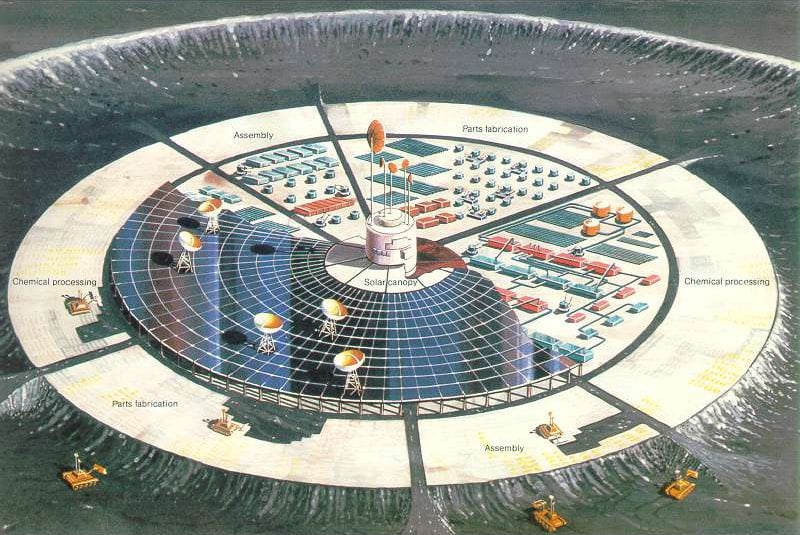
A new paper from NASA proposes how to leverage 3D printing and robotics technologies to literally take over the solar system.
I’ve written many times about the potential for 3D printing in space applications. The basic idea is that one could theoretically print the items necessary on site rather than incurring the astronomical cost of shipping them from a factory on Earth. Sure, there are a lot of details to work out, but it seems like a feasible idea.
But then, exactly what would you do? How would you build up an industrial operation from a single starting point? What components do you need? What kind of automation? How much support from Earth is required? What is the minimum amount of equipment to begin?
Four researchers at NASA have been developing answers to all these questions in a paper entitled, “Affordable, Rapid Bootstrapping of Space Industry and Solar System Civilization.”
If that’s not a dramatic headline, check out their abstract:
It has become feasible to bootstrap a self-sustaining, self-expanding industry at reasonably low cost. The equipment will be teleoperated and then transitioned to full autonomy so the industry can spread to the asteroid belt and beyond. The strategy begins with a sub-replicating system and evolves it toward full self-sustainability (full closure) via an in situ technology spiral. The industry grows exponentially due to the free real estate, energy, and material resources of space.
and, ominously:
Within another few decades with no further investment, it can have MILLIONS OF TIMES THE INDUSTRIAL CAPACITY OF THE UNITED STATES. Modeling over wide parameter ranges indicates this is reasonable, but further analysis is needed. This industry promises to revolutionize the human condition. [Emphasis mine]
No kidding!
The researchers evaluated several strategies for reducing the size of the “seed replicator” plant in order to achieve greater growth later. Their recommended strategy is as follows:
A third strategy, which to our knowledge has not been discussed in the literature, is to begin with a simpler, sub-replicating system and evolve it toward the self replication capability. In this strategy, the evolving system might never become a “selfreplicator” even after it reaches full closure, because each generation can continue creating something significantly more advanced than itself. This is the strategy adopted here.
So the objective is for the first robotic “colonists” on the Moon to fabricate a set of, say, 1700’s era machines and then to advance them steadily through the equivalent of the 1800’s, 1900’s, and finally back into the 2000’s. We argue that this can be accomplished in just a few decades.
Of course, 3D printing (and robotics) are essential components of this strategy.
Here is their chart, “Generations of Lunar Industry”:
The paper goes on to describe the precise nature of specific components required, such as excavators, solar cell-making machines, automated robonauts, and much more.
It’s possible they’ll start with industry such as is shown in this video of a traditional foundry:
What’s of most interest here is the rather small size of the “seed replicator”: they’re suggesting this process can begin with less than 8 tonnes of material sent to the lunar surface.
To put that into perspective, the SpaceX Falcon Heavy launch vehicle, set to commence operations in 2017, can deliver 16 tonnes to Lunar orbit. Beyond that, there are plans from more than one rocket company to build even larger vehicles, any of which could deliver that sort of payload to our Moon.
This is something that may actually be possible to do. And if so, it will profoundly change everything.
At the top of this story, I wrote the words, “the Solar System”. If the ideas in the NASA paper come true, then it will be “Our Solar System”.
Via ArXiv (PDF)
Image Credit: Wikimedia

